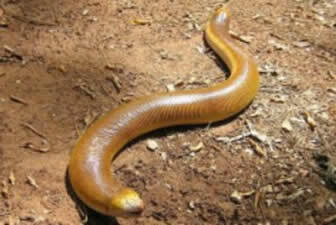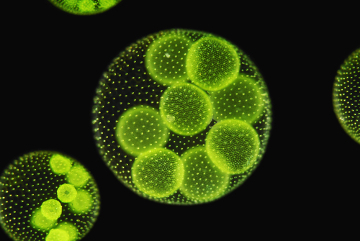The photo above is of a two-headed snake.
Do you know what kind of animal this is?
A) A snake, oh!
B) A kind of giant earthworm
C) A legless lizard
D) A blind snake
E) A relative of the blind snake
None of the answers are correct!
Two-headed snakes are actually animals belonging to a group of reptiles: that of amphisbenids, or amphisbenes. Thus, they are not lizards or snakes, much less earthworms, as these, to begin with, are invertebrate animals. are not blind snakes: amphibians of the gymnophion group.

Blind snake: it's not the same thing as a two-headed snake!
This name, two-headed snake, is given because the bodies of such animals are long, elongated and legless, like snakes. . In addition, its tail is short and rounded, roughly the same width as the head, looking like there are actually two heads, one at each end.

two-headed snake, or amphisbena.
In some species, especially when the individual feels threatened, the tail can move as much as the head, helping even more in this confusion as to what is each of these parts of the body. Other species may drop a piece of their tail, as some lizards do, to confuse their predators.
Amphisbenas, or two-headed snakes are little known and also seen by us. This is because they are species that live buried in the ground, digging their own tunnels. For this, they use the head, which is extremely hard and resistant.
In the subsoil, or the few times they appear on the surface (usually under leaves and humus), the two-headed snakes feed on earthworms, larvae, invertebrates and small rodents such as baby worms. mice.
Although amphisbens do not have venom, some species are capable of biting – and hard. Thus, it is important to respect the living being in question, avoiding catching or confronting him. If you act this way, you have no risk of getting bitten.

The two-headed snake has very small eyes.
In our country there are at least 67 species of amphisbenes already recorded by scientists!
By Mariana Araguaia
Biologist, specialist in Environmental Education
Brazil School Team


